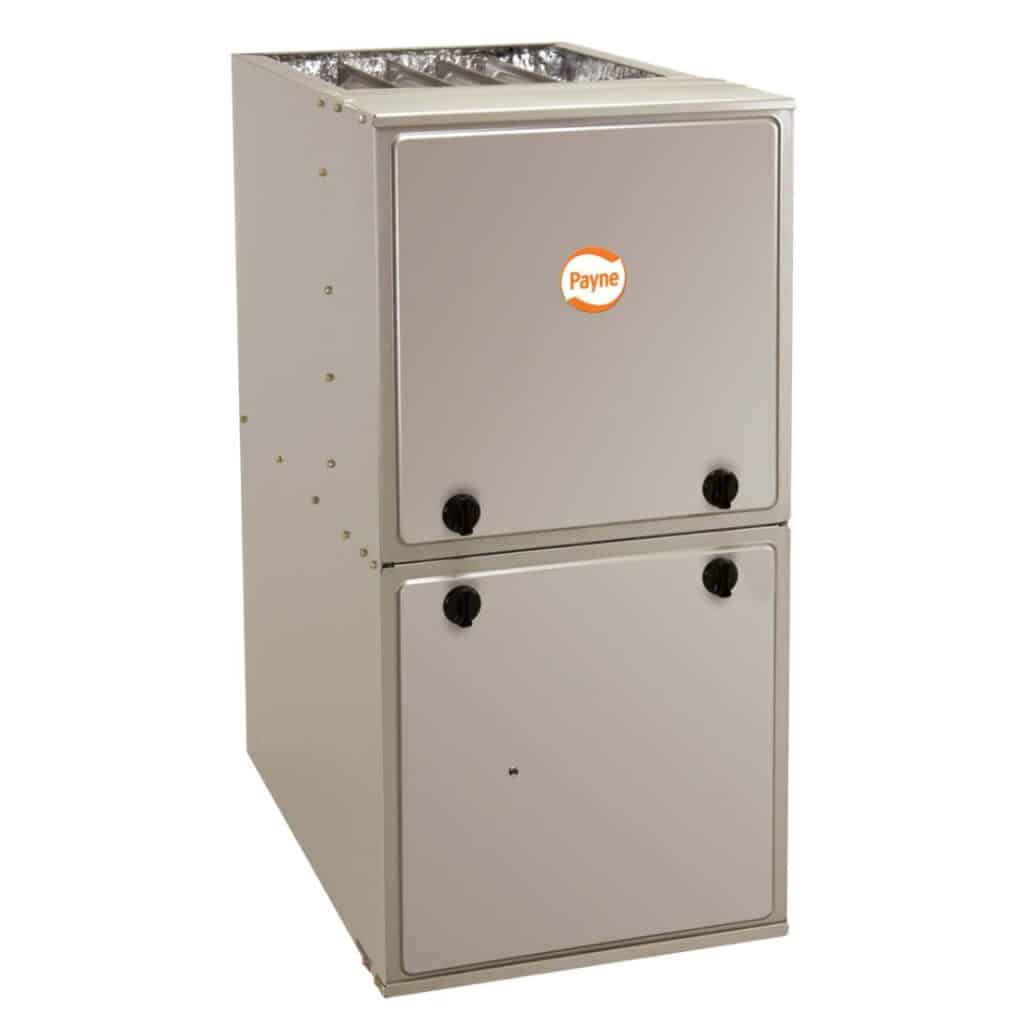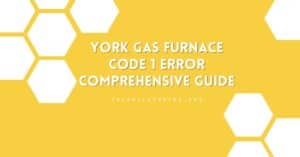When the chill sets in, and your home needs a reliable shield against the biting cold, a dependable furnace becomes an indispensable asset. In this comprehensive review, we spotlight Payne. This brand has weathered the industry’s storms to offer solutions synonymous with reliability and affordability. Our Payne furnace buying guide is essential for investing in long-lasting home comfort.
This guide is meticulously updated and infused with everything you need about Payne’s furnace offerings. From in-depth comparisons of top models and an overview of prices to insights on AFUE ratings, distinctive features, and warranty specifics, we’ve got it all covered.
Whether you’re a first-time buyer spellbound by the maze of HVAC terminology or a seasoned homeowner seeking an upgrade to your home’s heating solution, this review is designed to untangle the complexities and equip you with all the information you need. Dive into the world of Payne furnaces with us, explore their repertoire of heating solutions, and discover whether a Payne furnace is the right match for your sanctuary.
History of Payne Heating
Delving back into the annals of history, Payne has been in the heating game for over a century. Established in 1914, Payne has dedicated itself to providing affordable and efficient heating solutions. Their longevity in the market speaks volumes, reflecting a legacy of resilience, innovation, and commitment to customer satisfaction.
Why Choose a Payne Furnace?
Homeowners often face the critical decision of selecting the right furnace that meets their comfort needs without draining their wallets. So, what makes Payne a household name in comfort solutions?
Firstly, while Payne Furnaces may not be breaking the news with proprietary technologies or groundbreaking innovations, they stand out with their blend of convenience and functionality. They’ve carved a niche in the heating market, offering seamless integration of essential features without the hefty price tags often associated with high-end novelties.
Here are some key aspects of Payne furnaces that contribute to their appeal:
- Compatibility with Air Quality Enhancements: Payne furnaces are compatible with different air purifiers and humidifiers, ensuring warmth and improved indoor air quality. This synergy with other home comfort systems means you can create a holistic environment of comfort and health.
- Efficient ECM Blower Motors: The incorporation of Electronically Commutated Motors (ECM) in their blower design marks Payne’s commitment to efficiency. These advanced motors help maintain consistent airflow and temperature, reducing the need for frequent maintenance and enhancing the overall air quality within your space.
- Secondary Heat Exchangers: Secondary heat exchangers in Payne furnaces speak volumes about energy efficiency. By capturing additional heat that would otherwise escape, these components ensure more warmth is delivered to your home, optimizing fuel use and reducing waste.
- Sound-reducing Features: Nobody likes a noisy furnace that turns peaceful nights into noisy nightmares. Payne recognizes this; their furnaces come equipped with features designed to minimize operation noise, offering you the bliss of warmth without disturbance.
- Insulated Cabinets: Energy loss is a bane to efficiency and cost-saving. Payne furnaces feature insulated cabinets designed to reduce this loss, keeping the heat where it belongs (in your home) and ensuring every bit of energy is utilized effectively.
These practical, user-centric features make Payne Furnaces a compelling choice, balancing essential high-end attributes with affordability. While they might not be flaunting the latest tech gimmicks, their focus remains unwavering on delivering reliable, efficient, cost-effective home heating solutions.
Payne Furnace Models and Prices
Below, we delve into these standout models, highlighting what makes them the go-to options for homeowners seeking reliable, effective warmth without compromise.
PG96VAT

This model is one of Payne’s most efficient offerings, suitable for various Canadian homes. The PG96VAT’s dual features – a two-stage gas valve and a variable-speed blower motor – work to maintain even, comfortable temperatures. Additional highlights include superior humidity control, quieter operation, and high-temperature limit control for safety. It pairs excellently with air purification and humidification systems.
- AFUE: Up to 96%
- Furnace Type: Two-Stage
- ENERGY STAR Rated: Yes
- Tier: Premium
- Price Range: $4,300 – $5,500
PG95ESA
Though it features a less sophisticated single-stage gas valve, the PG95ESA doesn’t compromise on efficiency or certification standards. Its five-speed ECM blower motor ensures efficient temperature control, and its direct spark gas ignition is a mark of reliability.
- AFUE: Up to 96%
- Furnace Type: Single-Stage
- ENERGY STAR Rated: Yes
- Tier: Mid
- Price Range: $3,250 – $4,400
PG95XAT
This model emphasizes quiet operation without sacrificing performance. With its sound-reducing features, efficient two-stage gas valve, and multi-speed blower motor, the PG95XAT enhances home comfort.
- AFUE: Up to 95.5%
- Furnace Type: Two-Stage
- ENERGY STAR Rated: Yes
- Tier: Premium
- Price Range: $4,400 – $5,500
PG95ESUA
The PG95ESUA offers consistent performance at a more accessible price point. It stands out for its environmentally friendly features, reducing nitrogen oxide emissions significantly. Its multi-speed blower ensures efficiency and comfort.
- AFUE: Up to 95%
- Furnace Type: Single-Stage
- ENERGY STAR Rated: No
- Tier: Mid
- Price Range: $3,250 – $4,400
Interestingly, Payne keeps a narrow gap between its product tiers. The distinctions mainly lie in the efficiency ratings and whether the units are single-stage or two-stage.
In the mid-range category, Payne offers fixed-speed furnaces, notable for their single-stage operation. Despite their affordability, these units boast impressive Annual Fuel Utilization Efficiency (AFUE) ratings of up to 96%, ensuring long-term savings for Canadian consumers due to reduced energy consumption.
Elevating home comfort are Payne’s premium furnaces. These models are ENERGY STAR certified and present stellar efficiency ratings of up to 96%. They operate on a two-stage basis, seamlessly adjusting to your heating needs and promising uninterrupted warmth and comfort during harsh winters.
Pros and Cons of Payne Furnaces
No review is complete without a balanced look at the pros and cons.
Every brand has its strengths and areas that could use a bit of improvement. Regarding Payne, their reputation is built on solid ground with certain commendable aspects and a few drawbacks. Below, we dissect the strong points and the potential areas for enhancement concerning Payne’s line of furnaces.
Pros
Payne’s commitment is clearly reflected in their range of high-efficiency furnaces, standing out in the heating systems market. The brand has maintained a focus on quality and reliability, evident in several aspects:
- High-Efficiency Ratings: Payne excels in offering products that don’t just meet but often exceed the standard Annual Fuel Utilization Efficiency (AFUE) ratings. Their furnaces are notably efficient, translating into less energy waste and more savings on utility bills.
- ENERGY STAR® Certifications: Several models in Payne’s furnace line carry the coveted ENERGY STAR® certification, signaling adherence to strict energy efficiency guidelines. This feature is not just about savings — it also indicates the brand’s regard for environmental sustainability.
- Solid Warranty: Knowing that a substantial warranty backs a product can provide peace of mind. Payne ensures this by offering comprehensive warranty coverage, underlining the brand’s confidence in the durability and reliability of their furnaces.
Cons
Despite these strengths, there are areas where Payne could enhance their offerings:
- Lack of Innovative Features: One noticeable aspect where Payne could ramp up its game is innovation. The brand’s current furnace line lacks groundbreaking features or proprietary technology, limiting these products’ potential to outshine competitors and provide an enhanced user experience.
- Limited High-Efficiency Selection: While Payne does offer efficient models, their selection is less extensive than some homeowners might prefer. With just a handful of ENERGY STAR-certified models in their premium and mid-range categories, consumers seeking high-efficiency furnaces might find the options somewhat restricting.
- Narrow Product Range: The limited variety could be a stumbling block for Payne. For consumers who like to compare different models within a brand, the narrower range could be a deterrent, pushing them towards brands with a more diverse selection.
By addressing these areas, Payne could solidify its standing as a top-tier furnace provider and expand its reach among homeowners seeking a blend of innovation, efficiency, and variety in their heating solutions.
Customer Feedback
An analysis of customer feedback reveals a pattern of satisfaction among Payne users, with particular praise for the furnaces’ affordability, efficiency, and reliability. However, it’s noteworthy that some customers wished for longer-lasting parts and more innovative features.
Payne furnaces score high on ease of installation, meaning less hassle on setup day. Maintenance is straightforward, with Payne encouraging regular service to ensure longevity. The brand’s emphasis on simplicity extends to its maintenance requirements, ensuring homeowners aren’t left in the cold regarding upkeep.
Payne Furnace Warranty
Payne furnaces come with a 10-year warranty on parts, offering a safety net for your investment. Moreover, the quality internal components hint at a long lifespan, with the Payne 96 PG96VTA expected to last around 20 years with consistent maintenance.
Comparing Payne to Other Brands
Navigating the furnace market can be daunting, given the plethora of brands available, each with its unique offerings. Understanding how Payne stacks up against other industry stalwarts is crucial for making an informed purchase decision. Let’s delve into a comparative analysis of Payne with other notable furnace brands:
Among HVAC specialists, Payne enjoys a reputation for reliability. Their furnaces are known for their sturdy build and consistent performance, a testament to the brand’s commitment to quality. However, compared to other giants in the space, particularly Carrier and Bryant, Payne maintains a more focused approach to its product lineup.
Though robust in quality, Payne’s selection leans towards single-stage and two-stage units. This concentration means they offer fewer variations than some competitors, particularly those looking for modulating furnaces, which are absent in Payne’s lineup.
In contrast, Carrier and Bryant, both under the same corporate umbrella as Payne, present a broader range. Notably, they offer excellent modulating furnaces, providing consumers with advanced options for more precise temperature control and potentially greater energy savings.
It’s important to note that Carrier, a leading name in the HVAC industry, owns Payne and Bryant. This relationship implies a shared lineage in technology and quality standards. As a result, several single-stage and two-stage furnaces from Carrier and Bryant bear striking similarities to Payne’s models. However, they often also bring additional features or proprietary technology to the table, potentially offering consumers a richer selection and advanced alternatives.
When shopping for a furnace, understanding these nuances between brands is key. With its reliability and quality, Payne holds its ground in the market, especially for those seeking straightforward, no-frills heating solutions. However, looking toward sister brands like Carrier and Bryant may be advisable for homeowners looking for more advanced features, particularly modulating systems. Ultimately, the right choice will hinge on specific household needs, budget considerations, and preferences for technological sophistication in home heating systems.






